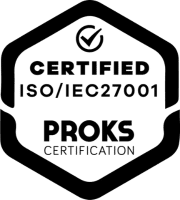Smart logistics solutions for dynamic production companies
Logistics in utility-vehicle production faces specific challenges: the on-time delivery of a large number of components requires sophisticated supply chain management strategies. Just-in-time and just-in-sequence are key elements for making production processes efficient and preventing bottlenecks. Particular attention is paid to the handling and transport of large, heavy components that require special logistical solutions. The integration of new technologies, such as electric drives, into existing production structures represents an additional logistical challenge. Robust and flexible supply chain management is essential to both control costs and meet dynamic market requirements in a timely manner.
Logistics innovations are driving the manufacturing industry forward
Flexible logistics design
Consolidating orders into transport-optimized delivery call-offs
The software enables forward-looking and fully automated planning of your transports over several days and consolidates orders into optimized delivery call-offs. This leads to a significant reduction in the total number of trucks.

Strategic and operational planning
Our innovative algorithms revolutionize strategic and operational planning in logistics. It enables precise long-term planning and efficient daily operations, optimizes routes and transport, reduces costs and increases the resilience of your supply chain through adaptability and rapid response to strategic and operational conditions.

Tariff optimization
FTL, LTL, Milkrun, FCL or LCL – tariffs play a significant role in logistics costs. Our algorithms select the most cost-effective tariff taking into account the load volume and the existing route network.

Timeslot control
Precise time window planning is crucial for the efficiency of delivery processes. For this reason, the algorithm used takes into account all time-related aspects, including delivery times, company holidays, public holidays and the maximum number of trucks that can be processed per time slot and loading point. On this basis, it optimizes access and departure from the loading stations.

Full container/empty container matching
The SaaS application automatically coordinates the delivery with the control of the empty containers. By coordinating trips with full containers with corresponding return trips with empty containers, empty trips can be avoided.

Your advantages
Less transports
Lower costs & CO2 emissions
Relief for employees
Perfect operational use of the transport network
Increased visibility in the supply chain
TCO costs as a sweet spot in the supply chain
Information about necessary transport capacities from MRP
Cost optimization of strategic transport tariffs
Supplier portal for networking suppliers and freight forwarders
Avoiding backorders
Standardized planning process including PDF pickup sheets
CO2 savings through innovative optimization
Our application maximizes the use of previously unused transport options in the truck sector, enabling more efficient distribution of goods. This leads to a reduction in unnecessary transport and thus a reduction in CO2 pollution. By implementing comprehensive planning that incorporates lean management principles, we reduce the consumption of resources in storage and production operations. This approach not only increases operational efficiency, but also sustainably supports the reduction of CO2 emissions.
